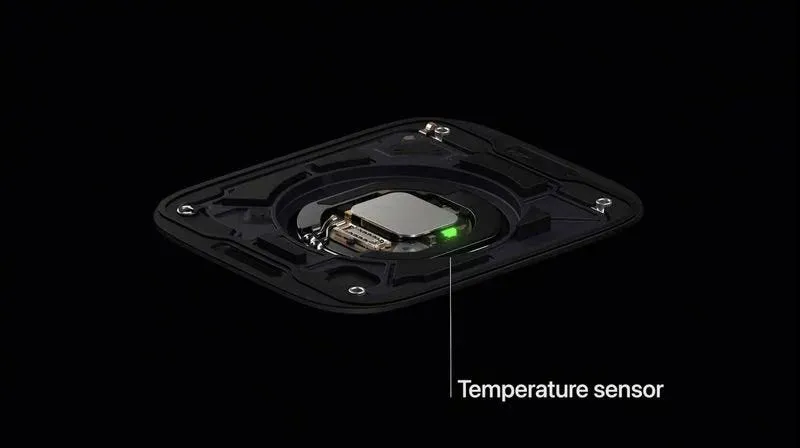
Today Apple announced that the new Apple Watch will track body temperature. The Series 8 will ship with two temperature sensors: one on the back crystal near your skin, and a second one under the display.
With the new body temperature sensors, the Apple Watch now measures three of the four major vital signs: temperature, pulse, and respiratory rate—only blood pressure remains.
What is body temperature used for in health? Here are three major applications: COVID-19, fertility, and sleep.
COVID-19 & infectious diseases
When your body is fighting an infection, the strain is visible in multiple sensors: your temperature rises, your resting heart rate and breathing go up slightly, and your heart rate variability goes down.
Is it possible your Apple Watch could detect signs of COVID-19, even before you feel sick?
A study of 63,153 people using Oura rings suggests yes. The study, published in Nature Scientific Reports, showed a machine learning algorithm using body temperature could detect COVID-19 about 2.75 days before participants sought out standard diagnostic testing. The overall accuracy (AUC ROC) was 81.9%.
Fertility
Your body’s lowest temperature occurs one day prior to the onset of ovulation. Couples who want to have children often use this knowledge to time attempts to conceive. Conversely, one method to avoid conception is the temperature method—most often combined with other methods, not used on its own.
One major caveat is that these methods use basal body temperature, not skin temperature, and the changes in temperature are often tiny—about 0.4°F. Will the temperature measured by Apple Watch be accurate enough for fertility planning? That’s the major open question.
What about after you conceive? Your body temperature also rises! In one small study using skin temperature, there was a signal just 5 days after conception.
This data is encrypted on the watch itself, an important consideration for anyone tracking their cycles after the Supreme Court’s overturn of Roe v. Wade.
Sleep
In the evening, your body temperature slowly falls. During sleep, your body temperature is 1-2°F lower than during the daytime. By monitoring temperature, you can identify problems in sleep hygiene—for example, a room that’s too hot.
What about other aspects of sleep hygiene? That’s why we built Empirical Sleep for Apple Watch (pictured left), which uses the sensor data from the Apple Watch and your own habits to recommend improvements in sleep health. Download it on the app store by clicking here.
Conclusions
With the new temperature sensor, the Apple Watch now has the potential to cover many areas of health: respiratory and fertility, sleep, heart health (with the ECG), neurological (with Parkinson’s), and more.
Get your free 30-day heart health guide
Evidence-based steps to optimize your heart health.
